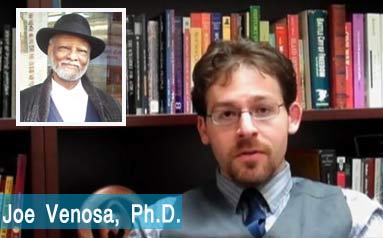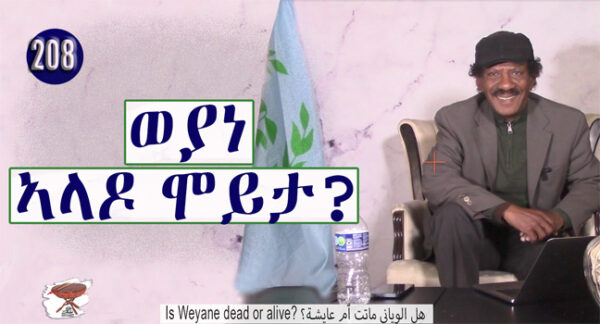Book Launch: The Hidden Party

Book: The Hidden Party
Language: Tigrinya
Paperback, nonfiction, 281 pages
Publisher: Negarit Media
Finally, Tsegu F. Bahta’s book, the Hidden party, is out and has reached distribution points. A list of distribution associates and their contact addresses is given below.
Tsegu’s book cover displays an image of Nakfa, the town that saw the fiercest battles between the Eritrean liberation forces and the occupying Ethiopian army. Towards the end of the war Nakfa was totally destroyed, a lone building, a mosque, remained standing until the end of the war in 1991.
In the cover, a drawing depicting Isaias as a president of the country, whose head is exemplified by an F1 bomb, to describe his belligerent character, and one of his feet in an over-sized boot, describing his megalomania, and thinking of himself bigger than he actually is, yet representing Eritrea and Eritreans who are ashamed to end up with a dictator like him after a long struggle that required heavy sacrifices.
The cover also shows the two flags that the EPLF carried until Isaias unilaterally replaced them with his own design. The blue flag is the Eritrean flag while the one with the star is the EPLF organizational symbol. That is how they were until 1993.
The book was edited by Semere T. Habtemarian and it is published by Negarit Media Publishing that was set to assist and support would-be authors to get you published.
The Hidden Party is divided into ten chapters and its main focus is on shedding light into the otherwise unknown party that secretly steered the EPLF until it was disbanded in 1994 in Nakfa when Isaias Afwerki decided he didn’t need it anymore and began to consolidate his powers after the independence of Eritrea by controlling the EPLF, the secrete party and the government.
In chapter one, Tsegu introduces himself and describes his childhood friends, life in Asmara and its outskirts in the first half of 1975, and how his father and his grandfather impacted his life. He fondly describes his brief stay with his grandfather, a product of his time who wondered about the difference between principles and guts!
It was from there that Tsegu left to join the EPLF, and here is where the flowery, impeccable Tigrinya description starts: the voyage to the training camp, a journey that captures the feeling of the recruits, their worries, the hardships they faced in the journey, and how the veterans handled them.
The Hidden Party gives an bird’s eye view of the 1977 liberation of cities and covers in great details the events of what became known as “the Strategic Withdrawal” when overwhelmed by the combined forces of the Ethiopian Derg, and Soviets specialists and armaments, forced the Eritrean liberation armies to withdraw from towns they liberated by paying immense sacrifices.
A chapter is dedicated for the Derg’s Red Star campaign and its repercussions, and another chapter for the Ethiopian prisoners of war.
The fifth chapter describes the second initiative of the Liberation Army as well as the second organizational congress of the EPLF. And here is the heart of the book, The Hijacking of the Revolution: the struggle that missed its direction. In this chapter Tsegu explains how the secret party got complete control of the EPLF organization, the mechanizations that were used, the recklessness that was observed, something that led to the current situation, where Isaias Afwerki was left the only person standing in Eritrea to run it as his private property.
In Chapter 8, The Downward Spiral of The PFDJ, Tsegu writes in details about the Ethio-Eritrean border war of 1998-2000, and its ramifications and negative outcome. In Chapter 9, as expected, he laments about leaving his country, similar to many others who left the land they gave great sacrifices to liberate.
The Hidden Party is full of anecdotes, humorous moments, sad events and heart wrenching experiences. It describes the story of the EPLF, from the an eyewitness perspective, written in the first person which makes it more insightful for Tsegu has worked in the Vigilance Department, under many leaders, including, the late Solomon Weldemariam, the late Ali Sayed Abdallah, the late Tekhlai Aden, Mussa Naib and the late Naizghi Kiflu. After the independence of Eritrea, he worked under Petros Solomon and the late Ali Sayed Abdallah in Intelligence field.
Tsegu Bahta, Washington DC, Cell: 202-280-4692
Fozia Hassen, Washington DC, Cell : 571-215-4545
Daniel Adhanom, Washington DC, cell: 703-975-1211
Kelit Alazar, Bronx, NY, Cell: 917-757-5068
Michael Eyob, Boston MS, Cell 617-290-7664
Saba Fessehaye, Tucker GA, Cell: 678-683-2034
Danile Yemane, St. Louis MO, Tel. 314-225-3792
Michael Berhane, Hopkins MN, Cell: 651-428-8794
Haregu Keleta Kidane, Seattle WA, Cell: 206-356-0899
Yosief H. Neraio, Lathrop CA, Cell: 408-396-3436
Michael Damtew, Troutdale, OR, Cell 503-803-5979




Awate Forum